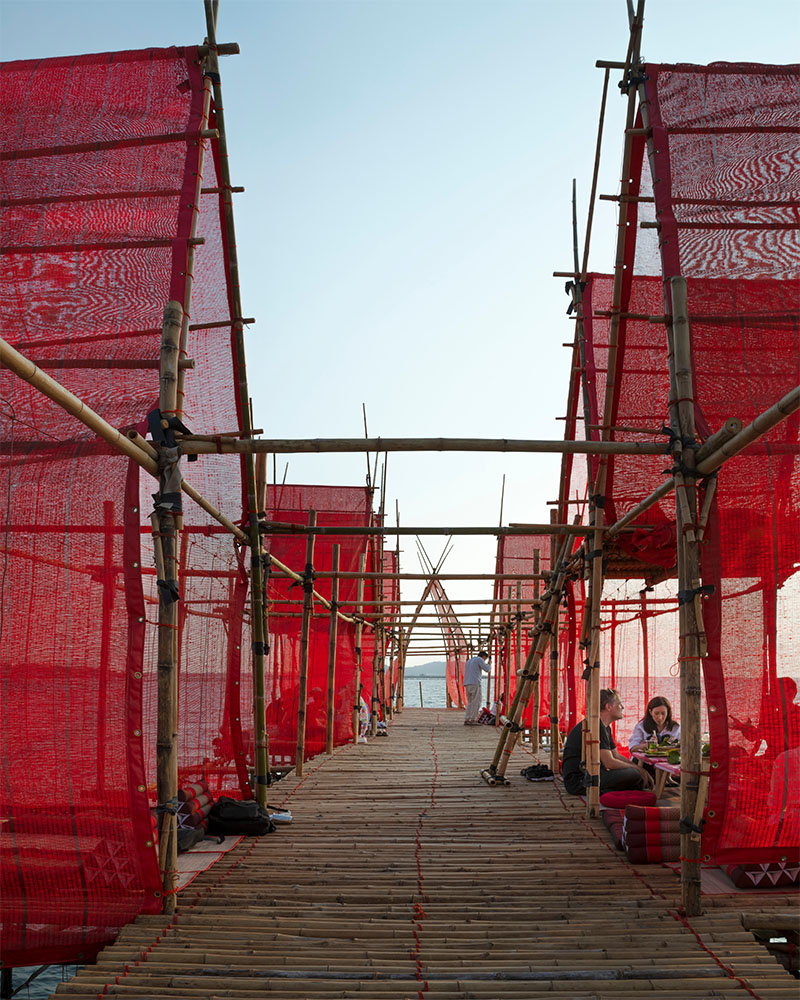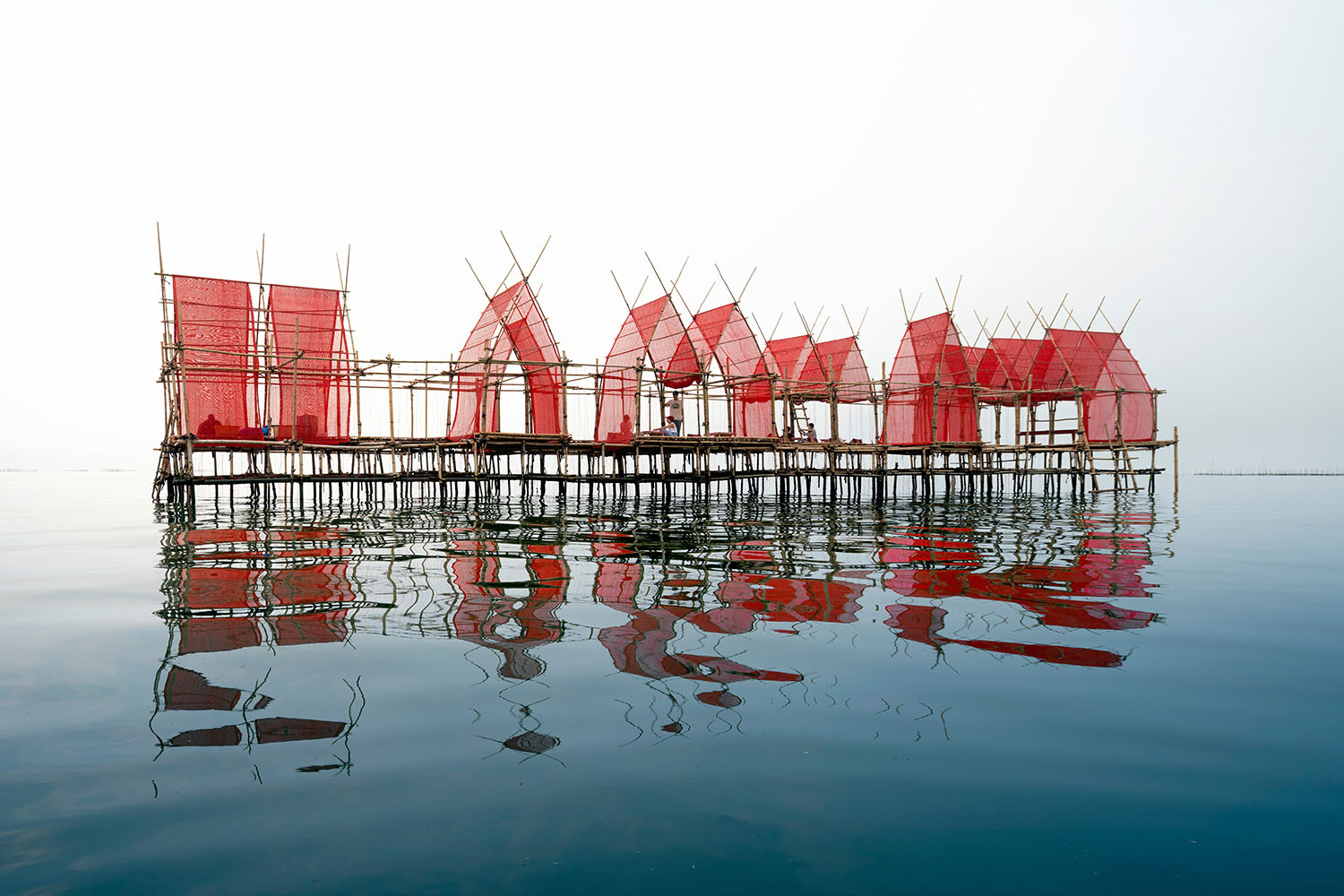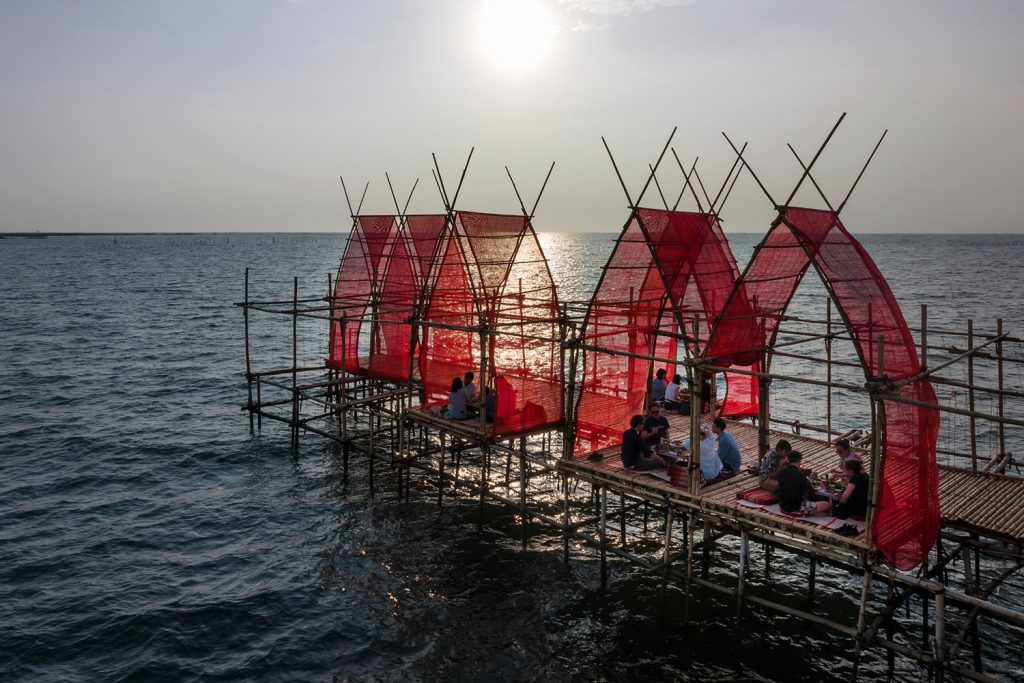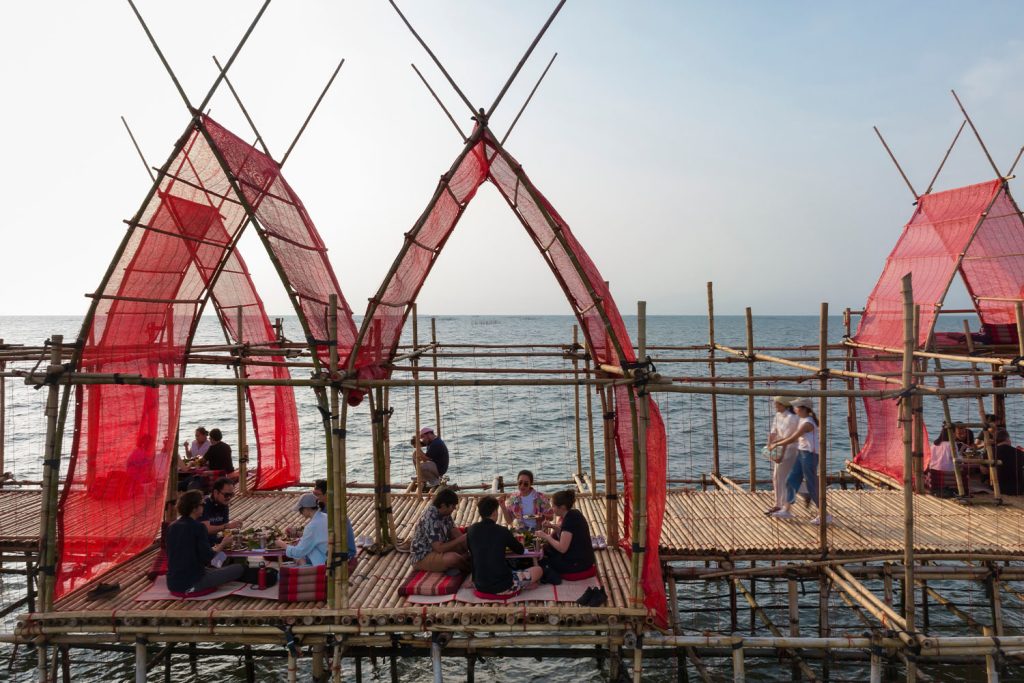Chat Architects designed the Angsila Oyster Scaffolding Pavilion located off the coast of the historic Angsila fishing village in Chon Buri District, Thailand.
“Once a thriving small-scale fishing town, the Angsila community has struggled in past decades to sustain the way of life of its fisheries due to a variety of factors. On an ecological scale, unfiltered waste from nearby factories and new suburbs is released into the rivers and canals, feeding directly into Angsila Bay. The resulting diminished water quality and decreased aquatic life and profitability in seafood cultivation has led to the abandonment of traditional fisheries. In particular, the younger generation has left their hometown to seek more profitable jobs in factories, offices, or retail businesses in nearby Bangkok.” said designers.


The Angsila Oyster Scaffolding Pavilion Project is aimed at revitalizing the struggling fishing and seafood industry of Angsila. The project aims to achieve this by creating a new oyster eco-tourism infrastructure prototype. The pavilion design is inspired by the bamboo scaffolding traditionally used for oyster cultivation, but has been modified to suit modern times.
The pavilion design is created using sustainable, inexpensive materials, labor, and construction techniques. The new scaffolding is built entirely by Angsila fishermen using traditional shallow-ocean bamboo construction techniques that require no power tools. Each bamboo column is manually driven into the ocean floor by the fishermen, using a “pogo-stick” style technique.
The bamboo members are tied together using rejected car seatbelts, which are purchased at a discount due to discoloration from local auto plants. To provide shade for visitors, a graphic red agricultural tarp is used. It complements the greenish bay waters and filters light while allowing ocean breezes to pass through.




















Leave a comment